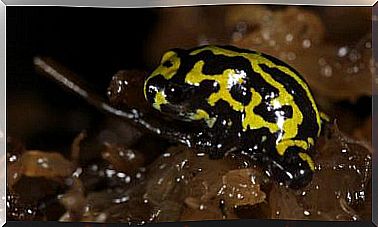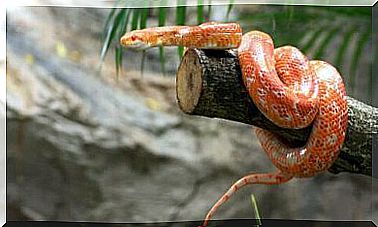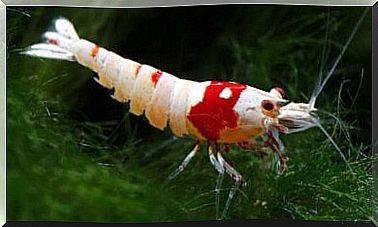Collared Water Snake: Between Water And Earth
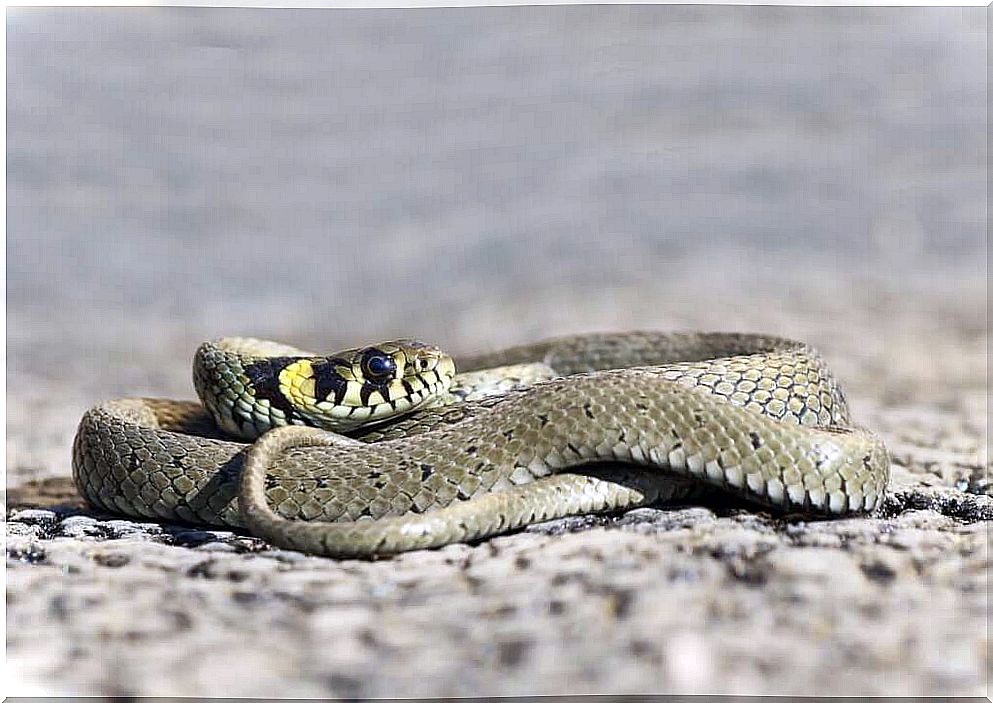
The collared water snake is the name given to the species Natrix natrix , a beautiful snake that spreads from England to Lake Baikal, in Siberia. This snake is dominant in many habitats, as it has an incredible ecological adaptability at various levels.
This curious reptile is found in the Iberian Peninsula, France, Italy and many other European countries, so it represents a typical species of this continent. Despite its coexistence with humans since time immemorial, many people do not know this snake, and may come to fear for their lives when they encounter it.
There is no need to be afraid, because we are facing a completely harmless animal, which at best defecates on anyone who dares to hold it. If you want to know more about this snake, continue reading this article.
How to distinguish this species?
It is possible that some readers residing in Europe came across one of these specimens on a wild ride, as official scientific sources estimate that in Germany, for example, there is a high population density of 3.6 individuals per hectare. Next, we’ll show you how to identify it:
- It is a relatively large reptile, as some specimens can reach two meters in length. However, the standard size is 120cm.
- Its color is very variable, but it is common for it to be between dark green and light brown.
- It has a series of black dorsal spots, grouped in three to six lines that run along its body.
- It has a distinctive white collar surrounded by black lines.
- Of any firm, this last feature is characteristic of young specimens, as it tends to disappear when the snake becomes an adult.
Easy to distinguish, right? The point is that less trained eyes can confuse this reptile with a species closely related to it, the viperine water snake ( Natrix maura ) . Its biggest differential is its size, as this second species never exceeds 80 centimeters in length.
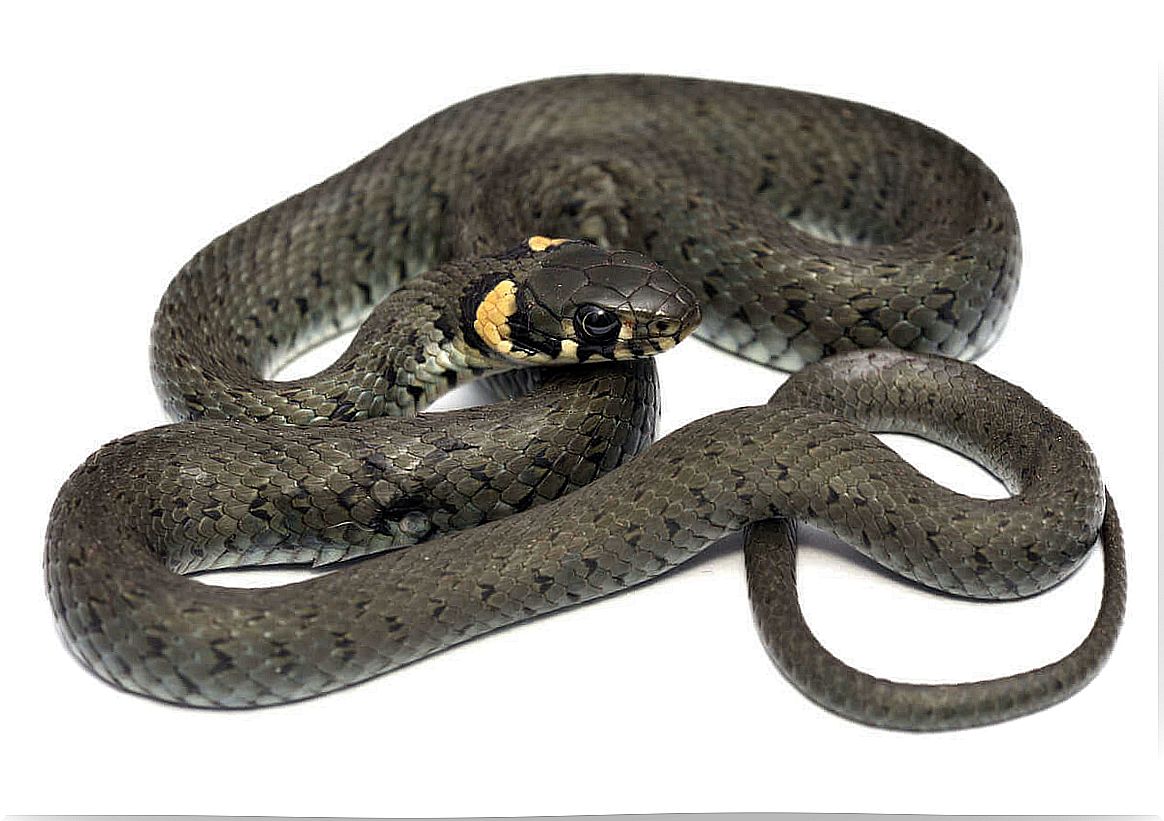
What are your habits?
Sources cited above report that the collared water snake feeds primarily on adult amphibians (which make up 60% or more of its diet) as well as fish, tadpoles, worms and other small vertebrates. This trophic specialization is due to her aquatic habits, as she loves to wander through springs, wells, lakes and even cisterns of human origin.
They are snakes with excellent swimming ability, which makes them the nightmare of most anuran amphibians that go to the springs to refresh or reproduce. Such is the level of competition and predation that some species of frogs, such as the Epidalea calamita , have learned to identify the chemical signals of these snakes. Thus, they avoid shelters impregnated with these smells that, without a doubt, would lead to their death.
Like many other reptile species, the collared water snake hibernates during the winter, as an environment of freezing temperatures, like the European forest in months like January, has little to offer. These snakes emerge from their burrows as spring temperatures rise and breed from April to May. In July, they have their egg clutches ready, which hatch in about 10 weeks.
A curious defense strategy
The collared water snake lacks venom, so it needs to be able to escape from various predators. Adults at first try to run away, but if they are cornered, they can display a variety of spectacular behaviors. These are two of them:
- If cornered, these snakes choose to spiral their body and lower their head, giving them a triangular shape. After that, they start to snort and simulate closed mouth attacks. They are trying to mimic the behavior and shape of venomous snakes.
- If all these efforts are in vain and the predator is not fooled, it resorts to a more extreme strategy: playing dead. This reptile has a behavior called thanatosis, that is, it simulates its own death so that the predator loses interest. She does this by dropping her head on the floor, opening her mouth and losing muscle tone across the board.
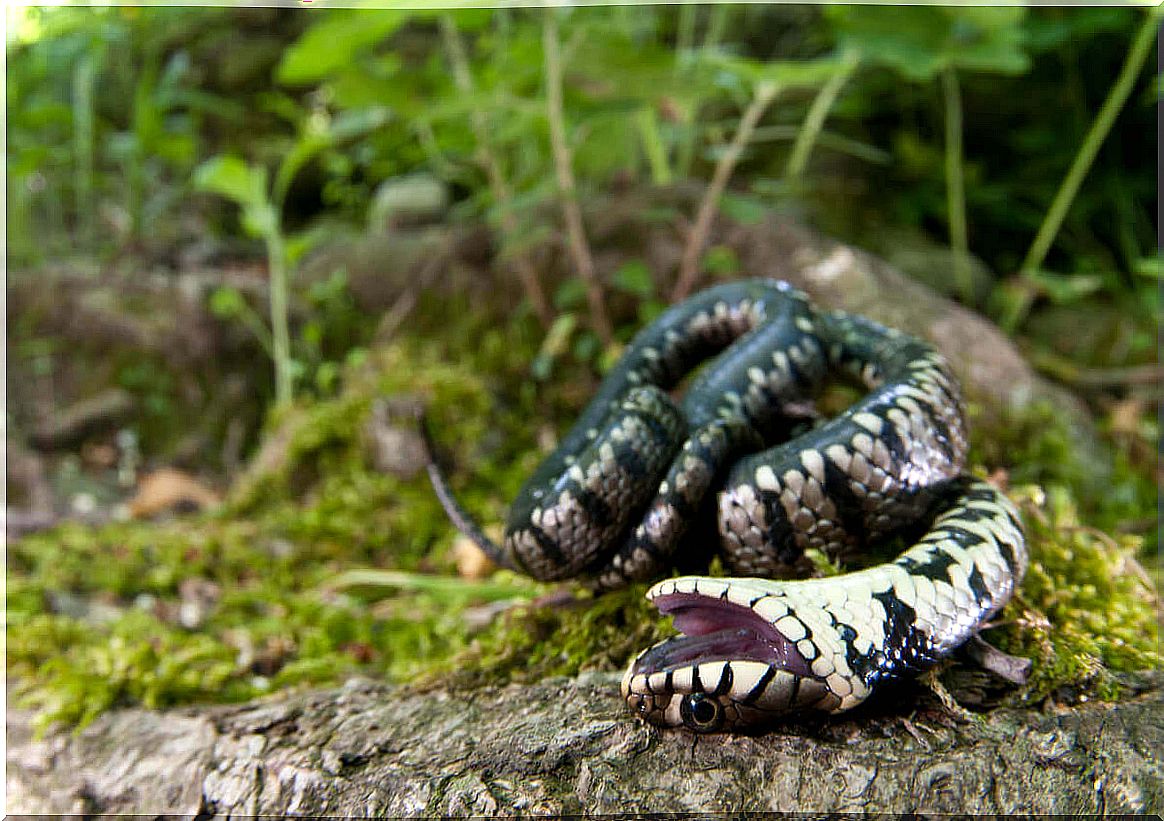
Collared Water Snake: Harmless and Fascinating
As we’ve seen, even the seemingly most common animals have fascinating features if you stop to look at them. Who would tell us that the collared water snakes, so common in gardens and fountains, would exhibit such complex behaviors? This is how nature works, providing tools to maximize the survival of all species in their natural environments.
